Are you a Quiet Speculation member?
If not, now is a perfect time to join up! Our powerful tools, breaking-news analysis, and exclusive Discord channel will make sure you stay up to date and ahead of the curve.
The cool thing about MTG finance these days is that there are so many tools available to the average financier. Three of my favorites are Trader Tools, MTG Stocks, and MTG Goldfish. These tools are invaluable resources for financially-minded mages. While each provides slightly different information, using them in conjunction can help give a complete picture of the details of a spec.
As I wrote about a few weeks ago, Modern season is still a ways off, but strikes me as the place to be for speculators at the moment. I don’t know about you, but I’m currently finding the opportunities in Standard to be unexciting and uninspiring. The most financially-relevant event, the Pro Tour, is behind us. Return to Ravnica block cards are no longer underpriced across the board, so picks need to be a little more precise to make money. Theros cards have largely settled, and as a large set that will be drafted all year long, we can expect a steady decline for most non-mythics in the set.
Today, then, I want to discuss some Modern sideboard tech that I didn’t touch on in my overview of the GP Antwerp top 16 decks. I’ll go through in detail how I used the three above-referenced tools to determine the merits of each of these specs. The sweet thing is that you can use this process, too! With all this information available, you don’t have to just take my, or anyone else’s, word that such-and-such is a good or bad spec. You can use these tools to give yourself a relatively objective place from which to work. And objectivity is cool.
Spellskite
This card has been getting a fair amount of attention in the financial community, so I figured I’d start here. Using MTG Goldfish’s Format Staple tool, we can quickly see why all the attention:
According to MTG Goldfish, Spellskite is the sixth most-played card in the Modern format. Appearing in 37.94% of decks is no small thing, although the card is hurt by only averaging 1.8 copies per deck. Both MTG Goldfish and MTG Stocks offer a nice chart showing the price history, but I prefer the cleaner look of MTG Stocks:
So we can see that the card spiked quite a bit around the release of Gatecrash, and has since come down a bit but is still more than twice what it was before the spike. This makes me a little more hesitant, as the buy-in price is higher and we may have already seen the major spike for this card—any further growth could just be incremental. Still, the card is below its ceiling and sees a lot of play. What about a third reference tool?
Using QS’s own Trader Tools, we’re able to narrow down the true amount of risk buying in to a card entails. Here we can see that Card Kingdom is purchasing a whole lot of copies at $6.50 each. So if we buy in at the TCG Player average of $7.99 (and let’s be honest, you’re probably going to find a better deal than that if you’re buying in), we’re only risking $1.49 per copy. Sure, the buy price could go down before we out our copies, but this gives us a good idea of the overall situation in the marketplace. And the situation? A pretty-low 19% spread. Even if you’re not buying in with actual cash, this is the kind of card I look to acquire in trades, especially if I can trade cards with a higher spread.
Torpor Orb
With Splinter Twin winning the last major Modern event, Torpor Orb is worth a look. The card has utility against other decks, too, including Birthing Pod, one of the more popular Modern decks. MTG Goldfish provides us the info to know that this is the 32nd most-played spell in Modern. The card hasn’t broken the top 50 of all cards in Modern, as MTG Goldfish breaks down the format staples in four categories: overall, creatures, spells, and lands. Breaking in on any of these lists shows potential, however, so seeing it at 32nd shows that the card is relevant. MTG Stocks indicates that the card is currently at its all-time high, having doubled gradually over the last year. Trader Tools shows a 45% spread, with a buy price sitting at $0.57 a copy.
Given all this info, it’s obvious Torpor Orb matters in the format, but it’s also a very narrow card. This could mean that the financial opportunity is low. With Modern season approaching, I’m looking to pick up a personal playset, just in case, and also looking to exchange cheap Standard rares for copies of this card. I don’t think it’s super likely that it explodes, but our MTG finance tools have provided us with at least three insights: 1) the card sees a decent amount of play in Modern decks, 2) the card has grown gradually over an extended period, and 3) dealers are picking up the card for well above bulk prices. There’s potential, but it doesn’t seem like a slam dunk.
Stony Silence
Did you know that Stony Silence is the 13th most-played card in the entire Modern format? It even averages three copies per deck (although almost assuredly all in the sideboard). I must admit, I had no idea this was the case, but learning this info certainly piques my interest.
Of course, seeing this is pretty discouraging. With an all-time high and an all-time low within only 10 cents of each other, this card has been painfully consistent in its time. It also came from Innistrad, a large set that sold extremely well. There are a lot of copies of Stony Silence in existence. And Trader Tools shows us that the card is being bought for around bulk prices, $0.14 cents a copy.
This is an example of how using these three tools in tandem is good value. If we had stopped after looking up the card’s rate of play on MTG Goldfish, we would have thought this was an awesome spec: highly played and at a very low price. But after looking at the info on MTG Stocks and Trader Tools, we come to a new conclusion. This is a card worth pulling from your bulk box, for sure. If you can trade bulk rares for copies, definitely do so. But is it worth buying in at the current price? Probably not. What’s the upside? A dollar? You’d need to buy in at bulk prices to make this spec worth it.
Grafdigger's Cage
Remember when this card first came out? It was hyped like crazy, caused all kinds of controversy, and pre-ordered at $10. Then it did very little in Standard and plummeted. Here’s the current situation:

(This is from the overall most-played list.)
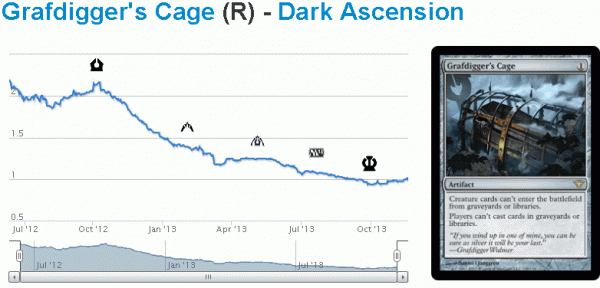
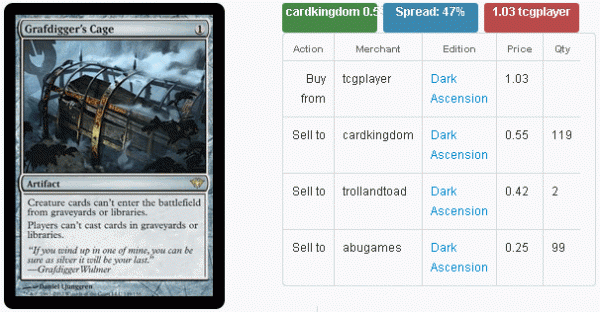
The cool thing about a card that started so high and fell so abruptly is that negative feelings toward the card are going to keep the price depressed—right up to the point when people realize it’s good. We know that this is seeing a reasonable amount of play in Modern, as it’s the 33rd most common card in decks. It’s also at its lowest price point ever, possibly the floor. A 47% spread doesn’t indicate that it’s poised to spike overnight, but it is being purchased for well above bulk prices. Finally, it comes from a small set that was unpopular and only drafted for about five minutes: Dark Ascension. I’d like to own a few copies of this card come Modern season.
DIY
Today, I examined some Modern sideboard tech that is seeing a good amount of play. But just seeing play isn’t enough to make a card financially relevant. Using the tools I’ve discussed in this article, you can personally examine many different elements of cards on which you are considering speculating. You should also apply knowledge like whether the card came from a large set or a small set, how much the set was drafted, and what the card and comparable cards have done historically. There are many elements to speculating on Magic cards, and the best thing you can do to be successful is to use all the tools available to you. Do you consult any other sites or databases when you’re researching specs? Please share in the comments!


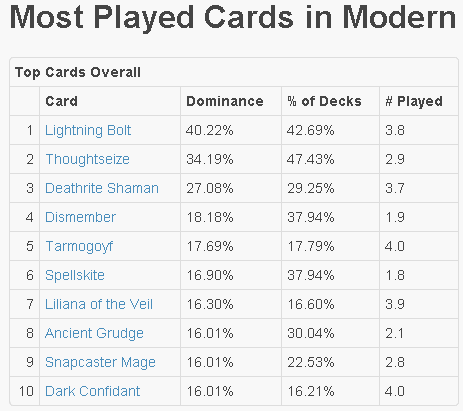
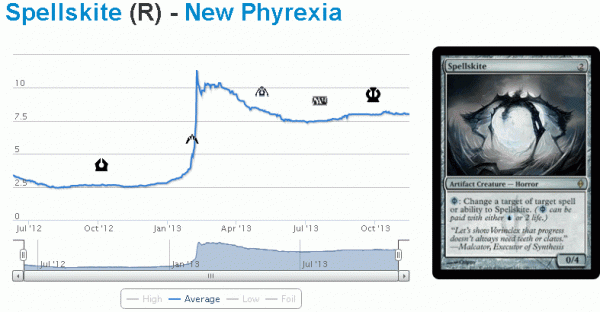
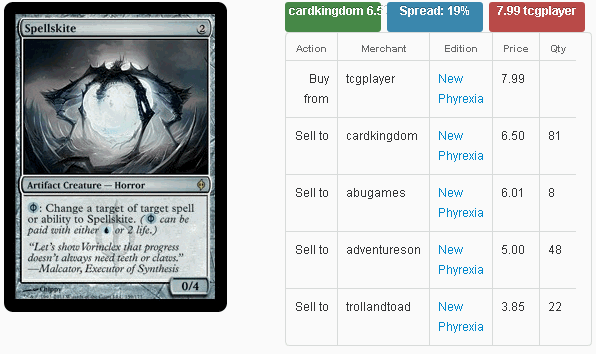
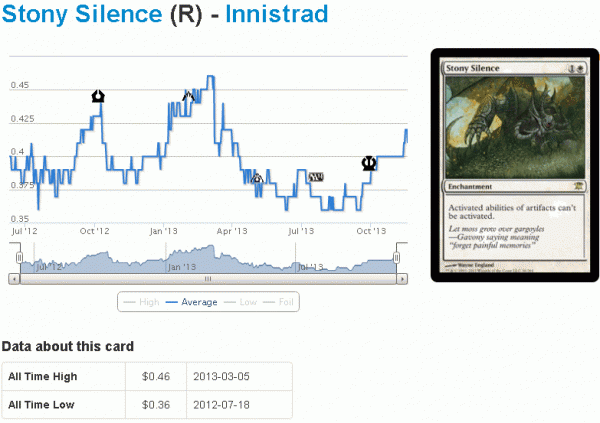


Excellent article, Danny. As someone who is new to modern, having someone show me these tools is very helpful. This will certainly allow me to research more modern opportunities as the season approaches!
This article is extremely solid. Your best QS work thus far, I would say. There are takeaways here for readers of all levels of experience. Rather than simply listing off a series of picks, I love how you show your thought process on how you arrived at the conclusions. More #mtgfinance articles should be like this one.
Do you know any good resources for estimating how many copies of a card are in print?